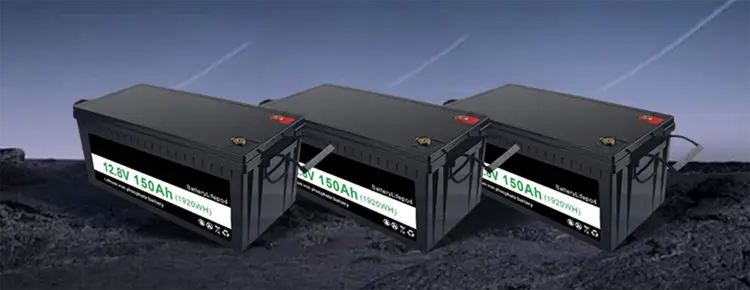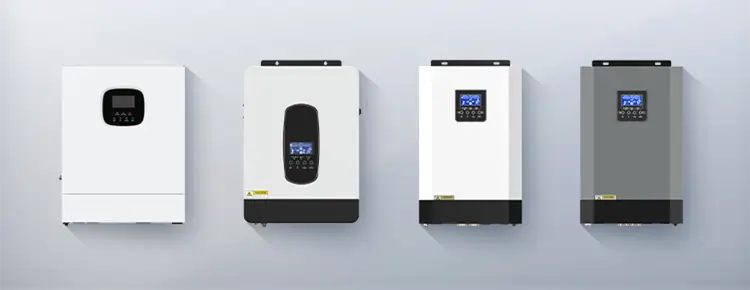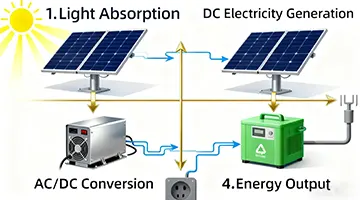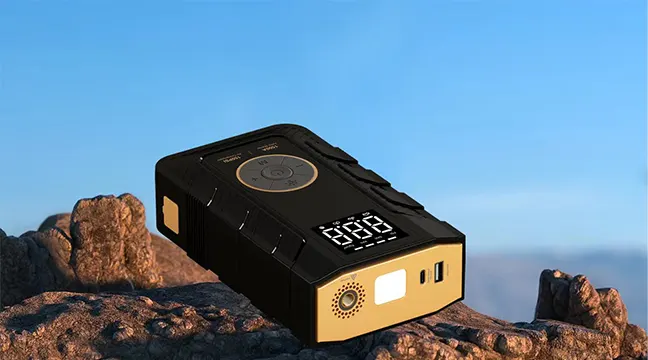In today's fast-paced, technology-driven world, staying connected and powered is more important than ever. Power banks and portable power stations have become popular solutions to keep our devices charged and ready to go, whether we're out and about or enjoying a great time outdoors. While both are used to provide power, they meet different needs and offer unique features. So to understand the difference between them, we need to understand what they are? What are your daily needs?
A power bank, also known as a portable charger, is a compact, lightweight device designed to charge smartphones, tablets, and other small USB-powered devices. These handy gadgets typically offer a battery capacity of 3,000mAh to 20,000mAh and can easily fit in a pocket, purse, or backpack, making them perfect for daily use and travel.
Power banks usually have one or more USB ports to charge multiple devices at the same time. Some advanced models also feature fast charging technology for even faster charging speeds. In addition, power banks usually have built-in safety features such as short-circuit protection, overcharge protection, and temperature control to ensure safe and efficient charging.
Portable power stations, also known as solar generators or power banks, are larger, more versatile devices designed to power a wide range of electronic devices, appliances, and tools. With battery capacities ranging from 150Wh to over 2,000Wh, these power banks can charge smartphones, tablets, laptops, cameras, drones, and even small appliances like mini fridges, fans, and TVs.
Portable power stations typically have multiple output options, including AC outlets, USB ports, and DC ports, allowing users to charge a variety of devices simultaneously. Many models also come with a built-in inverter that converts the DC power in the battery to AC power for the devices that need it.
One of the standout features of portable power stations is their ability to charge using a variety of methods, such as wall outlets, car chargers, and solar panels. This flexibility makes them a great choice for outdoor activities, camping, and emergency situations, where power sources may be limited.
Key Differences: Power Banks vs. Portable Power Stations
Size and Weight: Power banks are much smaller and lighter than portable power stations, making them more convenient for everyday use and travel. Portable power stations, while still portable, are larger and heavier, designed for more demanding power needs and extended use.
Battery Capacity: Power banks typically have lower battery capacity than portable power stations. This means they can charge smaller devices like smartphones and tablets multiple times, but are not suitable for powering larger appliances or devices with higher power needs.
Output Options: Portable power stations offer more versatile output options, including AC outlets, USB ports, and DC power ports, allowing users to charge a wider range of devices. Power banks, on the other hand, are limited to USB ports for charging smaller devices.
Charging Methods: Portable power stations can be charged using a variety of methods, including solar panels, making them more flexible and suitable for off-grid use. Power banks are typically charged via a wall outlet or USB port, limiting their use in situations where power is not available.
Price: Power banks are generally more affordable than portable power stations due to their smaller size, lower battery capacity, and limited functionality. Portable power stations have greater capacity, are more versatile, and tend to be more expensive.
Conclusion
When choosing between a power bank and a portable power station, it is critical to understand your specific power needs. Power banks are ideal for everyday use and travel, providing a compact and lightweight solution for charging small devices. Portable power stations, on the other hand, provide a more versatile, higher-capacity power source for a wider range of devices and situations. By considering factors such as size, battery capacity, output options, charging methods, and price, you can make an informed decision and choose the power solution that best suits your needs.
The difference between the two is the battery capacity and size. You can choose the right product based on your application needs. If you need to customize a
portable power station, you can contact YDESS New Energy. Our excellent team can meet any of your needs. Come and contact us! !








